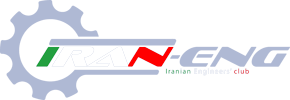بچه های متالورژی توجه کنن ... من اطلاعاتی پیدا کردم در مورد بی صدا کار کردن توربینهای گازی .. یه شرکت مدعی است که توانایی انجام این کار رو داره
MacDonald Steel silencers are designed to be installed on low pressure
pneumatic conveying systems. The sound attenuation medium dampers noises being conveyed in the air stream as they spiral through the silencer.
They are manufactured of HRS black iron, all-welded construction, painted with one coat of primer and one coat of finish enamel.
The sound attenuation medium is sandwiched between an inner perforated skin and an outer solid skin.
MacDonald Steel silencers are available in a large range of diameters and related lengths.
این متنشه ... من قصد دارم یه ایمیل بهش بزنم ... باید در موردش تحقیق کرد
Telephone:
519-620-0500
Fax:
519-621-4995
Address:
MacDonald Steel
Environmental Systems Division
200 Avenue Road
Cambridge, Ontario
N1R 8H5 Canada
Email:
sales@macdonaldsteel.com
service@macdonaldsteel.com
________________________________________________________
طوری که من مطلع شدم باید تیغه از جنسی باشن که درجه حرارات 1350 درجه رو تحمل کنه که در سال 1960 تونستن به این مهم دست یابند .
بچه ها متالورژی کندن(کُند) ... این مطلبو بخونین :
[FONT=Arial, Helvetica, sans-serif]
Materials Used and Temperature Resistance [/FONT]
[FONT=Arial, Helvetica, sans-serif]
The majority of gas turbines are made from nickel-based alloys. However current running temperature of the gas turbine (1350°C) is often in excess of the melting point of these Nickel alloys (1200~1315°C)! In order to overcome this problem, two main advancements have been adopted. One is sophisticated cooling of the blades, using air that bypasses the combustion chamber after the compressor, and the second is low thermal conductivity coatings on the surface of the blade. [/FONT]
[FONT=Arial, Helvetica, sans-serif]
Gas turbines obviously require protection to prevent the nickel alloy melting at high temperature but also require protection to prevent corrosion at high temperature. Corrosion is defined as the unwanted reaction of a material that results in the dissolution or consumption of the material e.g. the rusting of iron. Corrosion is accelerated by high temperature and impurities present in the air due to the combustion of fuel in the engine. Therefore coating the gas turbine will protect against both kinds of attack i.e. high temperature and corrosion.[/FONT]
[FONT=Arial, Helvetica, sans-serif]
[Web link: http://www.corrosion-doctors.org/MetalCoatings/Frames.htm ][/FONT]
[FONT=Arial, Helvetica, sans-serif]
Coating Technology[/FONT]
[FONT=Arial, Helvetica, sans-serif]
The original means of protecting nickel-based alloys that are used in gas turbine blades against high temperature oxidation and corrosion has been aluminising. This involves diffusing aluminium on to the surface of the blades to form a protective oxide layer, alumina. Since 1970 most gas turbine blade coatings have been applied by pack cementation and more recently by chemical vapour deposition. [/FONT]
[FONT=Arial, Helvetica, sans-serif]
[/FONT]
[FONT=Arial, Helvetica, sans-serif]
Figure3: 1400oC pit type controlled atmosphere gas fired furnace or bright annealing and pack cementation coating of turbine components. (Source: www.manning.uk.co)[/FONT]
[FONT=Arial, Helvetica, sans-serif]
Nickel coatings containing chromium (Cr), aluminium (Al) and yttrium (Y) called “NiCrAlY Coatings” have emerged to combat high temperature corrosion and oxidation. A hot corrosion resistant MCrAlY (M = metal) based bond coating containing 18% chromium, 22% cobalt, 12% aluminium and 0.5% yttium has been developed for use in gas turbine engines. These coatings exhibit maximum life in corrosive environments. The reason for the improved durability of the coatings is due to the formation of a thick, protective, and chemically stable alumina scale on the surface upon exposure to the environment. The addition of yttrium to the coating is to increase the adherence of the oxide layer to the substrate (base Ni alloy). NiCrAlY coatings can be applied by a variety of techniques including vacuum plasma spraying, low pressure plasma spraying, air plasma spraying, argon shrouded plasma spraying, high velocity oxygen fuel spraying, vapour phase deposition and electron beam physical phase deposition. [/FONT]
[FONT=Arial, Helvetica, sans-serif]
Thermal Barrier Coatings (TBC) aim to prevent extreme high temperature. MCrAlY coatings are being used in combination with ceramic (zirconia, ZrO2) coatings, where the MCrAlY is acting as a bond coat for the ZrO2 coating. [/FONT]
[FONT=Arial, Helvetica, sans-serif]
[/FONT]
[FONT=Arial, Helvetica, sans-serif]Figure4: Illustration of a thermal barrier coating (Source: Rensselaer Polytechnic Institute, Material Science & Engineering)[/FONT]
[FONT=Arial, Helvetica, sans-serif]
These coatings are used to extend the life of metal components by creating a temperature drop across the coating, permitting the underlying metal to operate at a reduced temperature. Future gas turbines will use TBC technology to permit the simultaneous increase of turbine inlet temperature and the reduction of turbine cooling air, thereby increasing efficiency. The properties of zirconia most critical for TBCs are a very low thermal conductivity and a thermal expansion close to that of superalloys.[/FONT]














 منم دیوونم ها خودم گفتم مورد داره حالا میگم هماهنگه .... آخه من توی یه کافی نت دیگه بودم اونجا بچه ها داشتن انتخاب واحد آزاد انجام میدادن(خدا رو شکر ما گیر این دانشگاه آزاد با این انتخاب واحداش نیفتادیم) بنابراین سرعت پایین بود و من نتونستم درست و کامل دانلودش کنم ...
منم دیوونم ها خودم گفتم مورد داره حالا میگم هماهنگه .... آخه من توی یه کافی نت دیگه بودم اونجا بچه ها داشتن انتخاب واحد آزاد انجام میدادن(خدا رو شکر ما گیر این دانشگاه آزاد با این انتخاب واحداش نیفتادیم) بنابراین سرعت پایین بود و من نتونستم درست و کامل دانلودش کنم ...